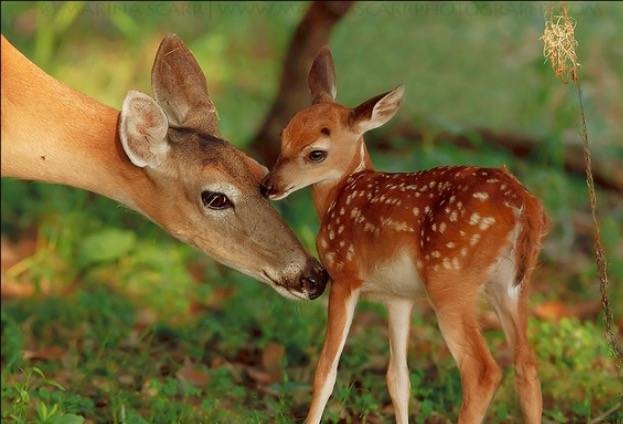
There are many factors that affect fawn recruitment including doe health, habitat, fawning cover, and predation. Many folks are concerned about the number of fawns that survive their first year and become a part of the functioning deer population on their property. There are several things you can do as a landowner or caretaker to help positively influence the fawn recruitment on your hunting property.
A healthy doe with the right habitat and fawning cover is more likely to raise her fawn(s) to become a part of the deer herd. A doe’s health directly influences the birth weight, number of fawns, and milk production. The third trimester of a doe’s birth is a critical time and the doe must be in great shape as a lot of the nutritional intake is going to the fawns. If a doe is carrying twin fawns one of the fawns may be bigger than the other one and in healthy does they are more likely to both be about the same birth weight. If the fawn does not meet a certain birth weight then its chances of survival are diminished.
A doe’s habitat plays a vital role in the health of the doe during and after birth. A doe’s nutritional needs are highest while the fawns are nursing. A diverse habitat ensure the doe’s nutritional needs are meet both before and after giving birth. As land managers we can help influence the landscape through timber stand improvements, logging, food plotting, and allowing some ground to be fallow. The best habitat in an area will be dominated by does during the fawning season as they always seek out the best areas to raise their fawns. In the weeks leading up to the birth and shortly thereafter the does are very territorial and defend that territory from predators and other deer.
The best types of fawning cover are areas that have a diversity of several different habitat types. An example would be a fallow field adjacent to a recently thinned stand of timber with a food plot planted in late spring and early summer forages. This helps minimize the amount of time the doe spends foraging for food, gives the fawns plenty of hiding spots, and would provide a high quality diet to aide in milk production. When a doe has multiple fawns she may separate them to reduce the amount of smell in the area they are bedding in. The first few weeks of a fawns life is spent mostly bedded and nursing.
It is critical to have a good buck to doe ratio so don't be afraid of taking does off your property and maintaining a healthier herd this way most of the does will be breed at or near the same time period. When this happens the area is saturated with young fawns and helps reduce the number preyed upon because there are so many fawns born in a short period of time. If the rut is drawn out then the does may have the majority of fawns over a long time period and the percentage of those preyed upon may increase. The three main predators in our area are bear, bobcats, and coyotes. By improving the fawning cover, habitat, doe health, and fawn timing we can improve the odds in the favor of the fawns.
**The above information was shared by DGIF biologist Dan Lovelace at the recent July 2016 QDMA Roanoke branch meeting***
